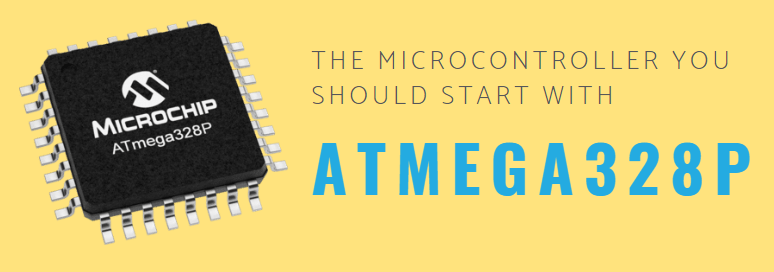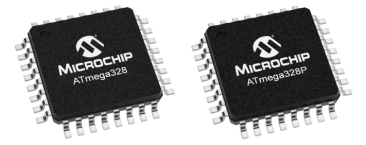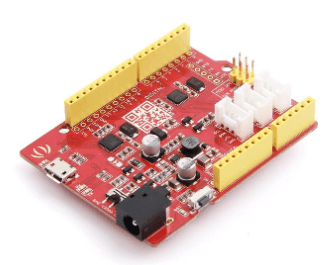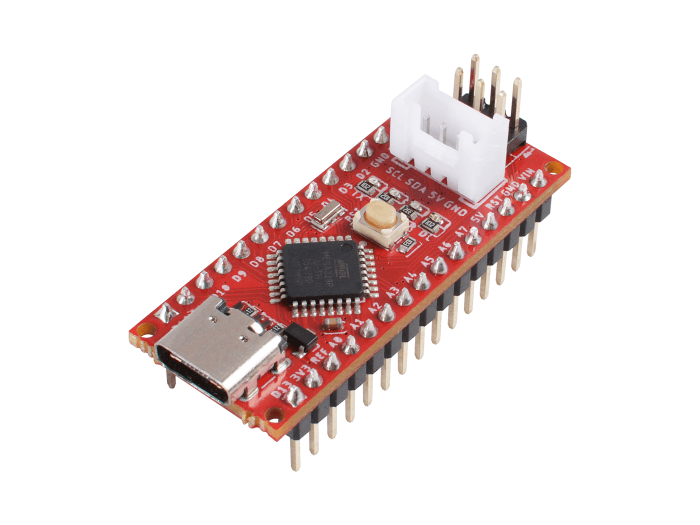ATmega328P, the one microcontroller you should start with

Nowadays, with Microcontrollers being relatively cheap and readily available in the market, making a purchase decision on a suitable one to pick might a hard task to handle. However, there’s one particular model that’s good to start with for users. That model is the ATmega328p, an 8-bit AVR microcontroller.
This article will provide insights as to why the ATmega328p is the one for you.
It’ll cover the following components:
- What is ATmega328P?
- Product Features and Parametrics
- Comparisons between fellow competitors: STM32 and MSP430
- Product Recommendations
- Summary
What is ATmega328P?

ATmega328P is a high performance yet low power consumption 8-bit AVR microcontroller that’s able to achieve the most single clock cycle execution of 131 powerful instructions thanks to its advanced RISC architecture. It can commonly be found as a processor in Arduino boards such as Arduino Fio and Arduino Uno.
Features and Parametrics
Features:
High endurance non-volatile memory segments
- In system self-programmable flash program memory
- Programming Lock for software security
Peripheral features
- Two 8-bit Timer/Counter with separate prescaler, compare mode.
- One 16-bit Timer/Counter with separate prescaler, compare mode, and capture mode
- Temperature measurement
- Programmable serial USART and watchdog timer with separate on-chip oscillator
Unique features compared to other microcontrollers (ARM, 8051, PIC):
- Power-on reset and programmable brown-out detection
- Internal calibrated oscillator
- External and Internal interrupt sources
- Six sleep modes: Idle, ADC noise reduction, power-save, power-down, standby, and extended standby
Parametrics
| Program Memory Type | Flash |
| Program Memory Size | 32 |
| CPU Speed (MIPS/DMIPS) | 20 |
| SRAM (KB) | 2,048 |
| Data EEPROM/HEF (bytes) | 1,024 |
| Digital Communication Peripheral | 1-UART, 2-SPI, 1-I2C |
| Capture/Compare/PWM Peripheral | 1 Input Capture, 1 CCP, 6PWM |
| Timers/Counters | 2 x 8-bit, 1x 16 bit |
| Number of Comparators | 1 |
| Temperature Range | -40 to 85deg |
| Operating Voltage Range (V) | 1.8 to 5.5V |
| Pin Count | 32 |
| Low Power | Yes |
Advantages and Disadvantages:
Advantages:
- Processors are simpler to use, with the usage of 8bit and 16bit instead of 32/64bit which are more complex
- Readily usable without additional computing components with 32k bytes of onboard self-programmable flash program memory as well as 23 programmable I/O lines
- Code Efficient, all 31 registers are directly connected to the arithmetic logic unit (ALU), making it 10 times faster than conventional CISC microcontrollers
- Optimized for AVR enhanced RISC instruction set
Disadvantages:
- Lacks performance compared to higher bit microcontrollers
Product Applications
The ATmega328P is supported with a full suite of program and system development tools which includes: C compilers, macro assemblers, program debugger/simulators, in-circuit emulators, and evaluation kits.
The fast PWM mode that provides a high-frequency PWM waveform generation allows for it to be suited for power regulation, rectification, and DAC applications.
Product Comparisons
Which is better? Atmega368P vs STM32 vs MSP430

| ATmega328P | STM32 | MSP430 | |
|---|---|---|---|
| Brand | MicroChip | Cortex | Texas Instruments |
| Cost | Low | High | Low |
| Architecture | Advanced RISC architecture | Power Architecture technology designed for embedded applciations | Older, von-Neumann architecture |
| Power Consumption | Low, more efficient power consumption | Medium, higher clock speed may result in higher consumption power | Low |
| Performance | Medium, lower bit but suitable for complex projects | High, fast processing speed, packs more power. Running 32 bit ARM processor core with sufficient RAM |
Low, more suitable for only simple projects |
| Ease of Usage | Easy to use, 8 bit and high compatibility with Arduino boards | Complicated due to its nature of being a 32 bit microcontroller | Complex relative to Arduino boards |
Verdict: Atmega368P. Though it lacks performance as compared to the STM32, its lower relative low cost and features packed makes it a value for money option that one should consider.
AtMega328P vs AtMega328

- Both share similar architectural design
- ATmega328P consumes lesser power
- ATmega328P slightly pricier
- TQFP package is only available in the 328P version
Verdict: Though 328P is slightly pricier than its previous successor, it’s able to save you couple microamps of power. In addition, the TQFP package variant of the chip is only available in the 328P.
Product Recommendations
Seeeduino V4.2: Value for Money Option

For only the price of $6.90, you’ll be able to get an Arduino UNO-R3 shield fully compatible board that uses ATmega328P microcontroller.
Product Features include:
- 14 Digital I/O Pins (6 PWM outputs)
- 6 Analog Inputs
- Micro USB programming and power supply
- ISP Header
- 3 on-board Grove connectors for better prototyping
- 3.3/5V system operation power switch
Pros:
- Relatively cheap and suitable for beginners
- Usage of micro USB to power and program the board for ease of usage
Seeeduino Lotus V1.1: Cost-effective board that’s compatible with your Mac Os

Features
- Combination of Seeeduino and base shield.
- Arduino UNO Compatible, uses the same chip (ATmega328P)
- On-board Grove connector
- Mac OS compatible.
- Cost-effective
Seeeduino Nano: The cheaper and better alternative of the Adruino Nano

The Seeeduino Nano packs USB Type-C instead of the typical mini USB that Adruino Nano uses. Furthermore, the added grove connectors allow for hundreds of sensors and actuators being played through simply plugging.
Features
- 43mm*18mm Tiny board
- 16M ATmega328P
- Fully compatible with Arduino Nano
- USB Type C for Programming and power
- On-board Grove I2C connector
- Breadboard-friendly
Main differences between Seeeduino Nano and Arduino Nano:
| Seeeduino Nano | Arduino Nano | |
|---|---|---|
| Processor | ATmega328P | ATmega328P |
| Input Voltage | 5V / 7-12V | 5V / 7-12V |
| IO Voltage | 5V | 5V |
| Analog In/Out | 8/0 | 8/0 |
| Digital IO/PWM | 14/6 | 14/6 |
| USB | Type-C | Mini-USB |
| Grove Connectors | 1xI2C | No Grove Connectors |
Summary
With the seemingly popularity of Arduino boards and its compatibility with ATmega368p, it stands out among the pack as the one to start with for your project. The relative features and low cost makes the ATmega368P a value for money option. However, if performance is placed high among your list, the STM32 model would be the one for you.